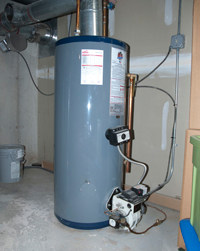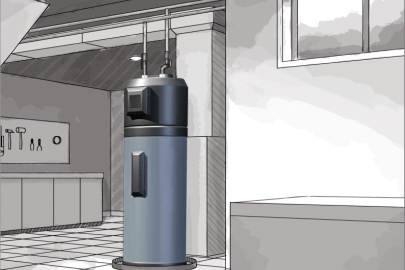What are your thoughts with regards to What Kind of Maintenance Do Water Heaters Need??

Hot water is necessary for daily convenience, whether it's for a refreshing shower or washing meals. To guarantee your warm water system runs effectively and lasts much longer, regular maintenance is crucial. This write-up provides functional pointers and insights on how to preserve your home's warm water system to stay clear of disruptions and costly repair services.
Intro
Keeping your home's hot water system could seem daunting, however with a couple of basic steps, you can guarantee it operates smoothly for several years ahead. This guide covers everything from understanding your warm water system to do it yourself maintenance pointers and recognizing when to hire expert assistance.
Importance of Maintaining Your Hot Water System
Normal upkeep not only extends the lifespan of your hot water system but also ensures it operates effectively. Neglecting maintenance can lead to decreased performance, greater power costs, and also premature failing of the system.
Indicators Your Warm Water System Requirements Maintenance
Understanding when your hot water system needs focus can stop significant problems. Look out for signs such as irregular water temperature level, unusual noises from the heating unit, or rusty water.
Flushing the Hot Water Heater
Flushing your water heater removes debris accumulation, boosting effectiveness and prolonging its life.
Monitoring and Changing Anode Rods
Anode poles avoid rust inside the tank. Checking and replacing them when broken is critical.
Facility Problems Requiring Specialist Aid
Examples consist of significant leaks, electric issues, or if your water heater is consistently underperforming.
Regular Professional Maintenance Advantages
Professional upkeep can consist of comprehensive evaluations, tune-ups, and ensuring compliance with safety and security standards.
Inspecting and Readjusting Temperature Setups
Adjusting the temperature level settings makes certain ideal efficiency and security.
Do It Yourself Tips for Maintenance
You can execute a number of maintenance jobs on your own to keep your warm water system in top condition.
Looking for Leaks
Routinely evaluate pipes and connections for leakages, as these can result in water damages and greater bills.
Recognizing Your Hot Water System
Prior to diving into maintenance jobs, it's helpful to comprehend the standard elements of your warm water system. Normally, this consists of the water heater itself, pipelines, anode poles, and temperature controls.
Regular Monthly Maintenance Tasks
Routine monthly checks can assist catch small concerns prior to they escalate.
Testing Pressure Alleviation Valves
Examining the pressure relief valve guarantees it works correctly and prevents excessive pressure accumulation.
Shielding Pipes
Insulating hot water pipelines minimizes warmth loss and can conserve energy.
When to Call a Professional
While DIY maintenance is valuable, some issues need expert proficiency.
Final thought
Routine maintenance of your home's warm water system is crucial for efficiency, long life, and price financial savings. By adhering to these tips and knowing when to seek professional help, you can make sure a trusted supply of warm water without unanticipated disturbances.
How to Maintain an Instant Hot Water Heater
- Before tinkering with your hot water heater, make sure that it’s not powered on. You also have to turn off the main circuit breaker and shut off the main gas line to prevent accidents. Also turn off the water valves connected to your unit to prevent water from flowing into and out of the appliance.
- 2. When you’re done, you have to detach the purge valves’ caps. These look like the letter “T” and are situated on either side of the water valves. Doing so will release any pressure that has accumulated inside the valves while at the same time avoid hot water from shooting out and burning your skin.
- 3. When the purge valves’ caps are removed, you have to connect your hosing lines to the valves. Your unit should have come with three hoses but if it didn’t, you can purchase these things from any hardware or home repair shops. You can also get them from retail stores that sell water heating systems. Read the user’s manual and follow it to complete this task properly. When the hosing lines are connected, open the purge port’s valves.
- 4. You should never use harsh chemical cleaners or solutions when cleaning your unit. Make use of white vinegar instead. It should be undiluted and you’ll probably use about 2 gallons.
- 5. Now flush your water heater. This task should probably take about 40 minutes. We can’t give you specific directions for this because the procedure is carried out depending on the type, model and brand of your heater. With that being said, refer to the user’s manual.
- 6. When you’re done draining the unit, you have to turn off the purge port valves again. Remove the hosing lines that you earlier installed on each of the water valves. Put the valve caps (purge port) back in their respective places and be very careful so as not to damage the rubber discs that are found inside these caps.
- 7. Now that everything’s back in place, check your user’s manual again to find out how to reactivate your water heating system.
- 8. Once it is working, turn one of your hot water faucets on just to let air pass through the heater’s water supply pipes. Leave the tap on until water flows smoothly out of it.
https://www.orrplumbing.com/blog/2014/september/how-to-maintain-an-instant-hot-water-heater/

As a passionate person who reads on Water Heater Maintenance Tips You Can't Afford to Forget, I imagined sharing that excerpt was a great idea. Remember to take the opportunity to share this post if you appreciated it. Many thanks for your time. Return soon.
Call Today
Comments on “Caring for Your Home's Hot Water System: Essential TipsEasy Steps to Caring for Your Home's Hot Water SystemSteps to Prolong the Lifespan of Your Home's Hot Water System By Maintenance”